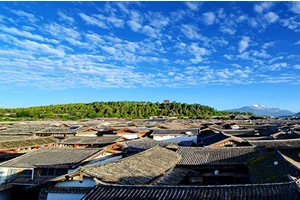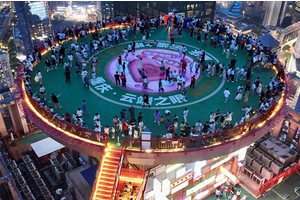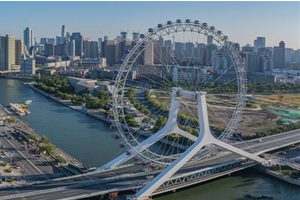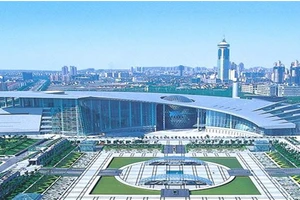Dancheng tourism
1. On the Mian River in Dancheng, there is a pavilion with a long history. According to legend, during the Warring States period, the famous strategist Guiguzi took shelter from the wind under the Minghe Bridge and met two old men playing chess and alchemy. After the prince took Dan medicine, he became immortal, so Dancheng was also called "Fairy City". The "Prince Bridge" and "Prince Pavilion" on the Ming River witnessed this legend.
2. The ancestral temple of Laoya people in Dancheng was built in Qianlong period of Qing Dynasty, but unfortunately it was destroyed in the Cultural Revolution. In 1997, the local people spontaneously raised funds to rebuild the temple. There are many trees and temples in the park, and there are all kinds of ancient monuments, ancient trees and ancient graves. Every year from the first day of the first month to the Lantern Festival, traditional temple fairs will be held here, becoming an important place to show Fuxi culture.
3. The Central Plains Folk Culture Park, located 15km east of dancheng, is a national 2A-level tourist attraction integrating agriculture, industry and business culture. The folk garden was founded in the autumn of 2004 and completed in the spring of 2006, covering an area of more than 30 mu. There are science parks, newspaper reading columns, libraries and other public entertainment places in the park, as well as 12 scenic spots such as Tiangong Kaiwu Pavilion and Jixian Hall.
4. The site of Emperor Guangwu of Han Dynasty, two kilometers east of dancheng, is a well-known ancient cultural site. According to legend, the site was originally named "manjusri temple", with only three dilapidated halls. Later, after Liu Xiu, the young master of the Western Han Dynasty, was hunted down by Wang Mang, the temple was renamed "Guangwu Temple". Since then, the word "Guangwu" has made the temple famous and the incense has flourished to this day.
The scenic spots in dancheng include Zhongyuan Folk Garden, Duanzhai Site, and Guangwu Temple in Han Dynasty. 1. Zhongyuan Folk Garden: There are more than 2,000 pieces of farming tools used by farmers in the Central Plains, including earth plows and rakes, spinning looms, big carriages and so on thousands of years ago, and many folk goods that have disappeared among the people. 2. Duanzhai Site: Located in the northwest corner of Duanzhai Village, Baji Township, dancheng, it contains rich Yangshao culture and cultural relics of Dawenkou, Longshan, Shang and Zhou Dynasties.
The scenic spots in dancheng include Zhongyuan Folk Garden, Duanzhai Site, and Guangwu Temple in Han Dynasty.
1. Zhongyuan Folk Garden: There are more than 2,000 pieces of farming tools and daily necessities used by farmers in the Central Plains, including earth plows and rakes, spinning looms, big carriages and so on thousands of years ago, and many folk goods that have disappeared among the people.
2. Duanzhai Site: Duanzhai Site in Neolithic Age, located in the northwest corner of Duanzhai Village, Baji Township, dancheng City, Henan Province, with a length of 391 meters from north to south and 283 meters from east to west, covering an area of 110,653 square meters. It belongs to the Neolithic ancient settlement site and contains rich Yangshao culture and cultural relics of Dawenkou, Longshan, Shang and Zhou Dynasties.
3. Site of Guangwu Temple in Han Dynasty: According to legend, the original name of Guangwu Temple was "manjusri temple". At that time, there were only three dilapidated temples, which were unknown. Later, Liu Xiu, the young master of the Western Han Dynasty, was killed by Wang Mang after usurping the dynasty, leaving an allusion. The name "manjusri temple" was changed to "Guangwu Temple". Since then, the temple has become famous and the incense has won great success.






